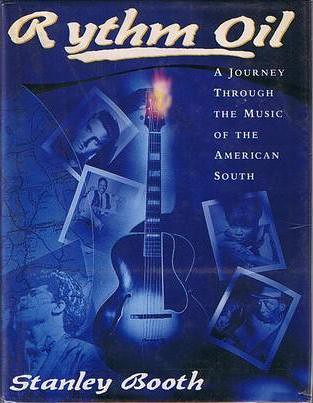 Stanley Booth is a writer, a researcher, a journalist, a chronicler of an era of music...Each of the chapters in this book were previously published in various magazines, including Esquire, Saturday Evening Post, Playboy, Rolling Stone, Atlantic Weekly, and the Village Voice, to name a few. One chapter on Elvis Presley, however, contains an opening paragraph that was not safe for publication in Esquire back in 1976, and thus held back from the original article (and probably wouldn't be safe for publication today, either).
Stanley Booth is a writer, a researcher, a journalist, a chronicler of an era of music...Each of the chapters in this book were previously published in various magazines, including Esquire, Saturday Evening Post, Playboy, Rolling Stone, Atlantic Weekly, and the Village Voice, to name a few. One chapter on Elvis Presley, however, contains an opening paragraph that was not safe for publication in Esquire back in 1976, and thus held back from the original article (and probably wouldn't be safe for publication today, either).
Rythm Oil is subtitled "A Journey Through the Music of the American South": In addition to Elvis, there are chapters on old bluesmen Furry Lewis and Mississippi John Hurt, Otis Redding, Rufus Thomas and daughter Carla Thomas, The Flying Burrito Brothers, the Janis Joplin Revue, and more (I haven't finished the book yet!).
"What became Stax records began in 1958 with a one-track tape recorder owned by a white brother and sister, Jim Stewart and Estelle Axton [1], and located in Brunswick, Tennessee, behind the Satellite Dairy, a take-out ice-cream parlor. Estelle was a grammar-school teacher and Jim was a bank teller and a country fiddle player. They had little knowledge of what they were getting into, but they had incredible luck. For one example, Estelle's son Packy rehearsed on weekends at the Dairy with the Royal Spades, a rhythm and blues band of white Messick High School students that would develop into the Mar-Keys, the Stax house band. For another, in 1960 they found an empty movie theater that rented for $100 a month – the Capitol at 926 East McLemore – in a black South Memphis neighborhood. And Rufus Thomas brought the first hit to Stax. Thomas, who had started out on Beale Street at the age of six playing a frog in a show at the Grand Theater, had been a Rabbit's Foot Minstrel, MC at the Midnight Rambles, half the dance team of Rufus and Bones, a local radio announcer, and the first person to have a hit on the Sun label, 'Cause I Love You,' a regional sensation sung by Rufus and his daughter Carla, was followed by the first national hit on Stax – 'Gee Whiz' – a solo by Carla, who had written it when she was about fifteen....In October of 1962 Stax released its first Otis Redding record, made in half an hour at the end of a Johnny Jenkins session....There was a feeling in the air that summer [1967] – the summer of Monterey, of Sergeant Pepper, of LSD – that people were coming together, red and yellow, black and white, in peace and love.In December Otis Redding would record 'Dock of the Bay.' None of us knew what was coming.[2]In the wake of Martin Luther King's death, the climate for an integrated business in a black neighborhood changed, even on East McLemore Avenue. The front door of Stax, which had always been left open – Carl Cunningham, the Bar-Kays' drummer, had come in one day with a shoeshine kit and stayed to become a musician – was locked. Then one day it was locked for good. Today Stax is a crumbling shell. It was as if Stax had such good luck in the beginning that when at the end the bad luck came it was annihilating."— Stanley Booth
Rythm Oil was published in 1991 by Pantheon Books. The hardcover edition is out of print, but the book is readily available in trade paperback from Amazon
---------------
Footnotes
[1] Stax is an acronym formed from the first two letters of Jim Stewart's and Estelle Axton's last names.
[2] Otis Redding died in a plane crash on December 10, 1967, along with the five teenage members of his backing band, the Bar-Kays.

No comments:
Post a Comment